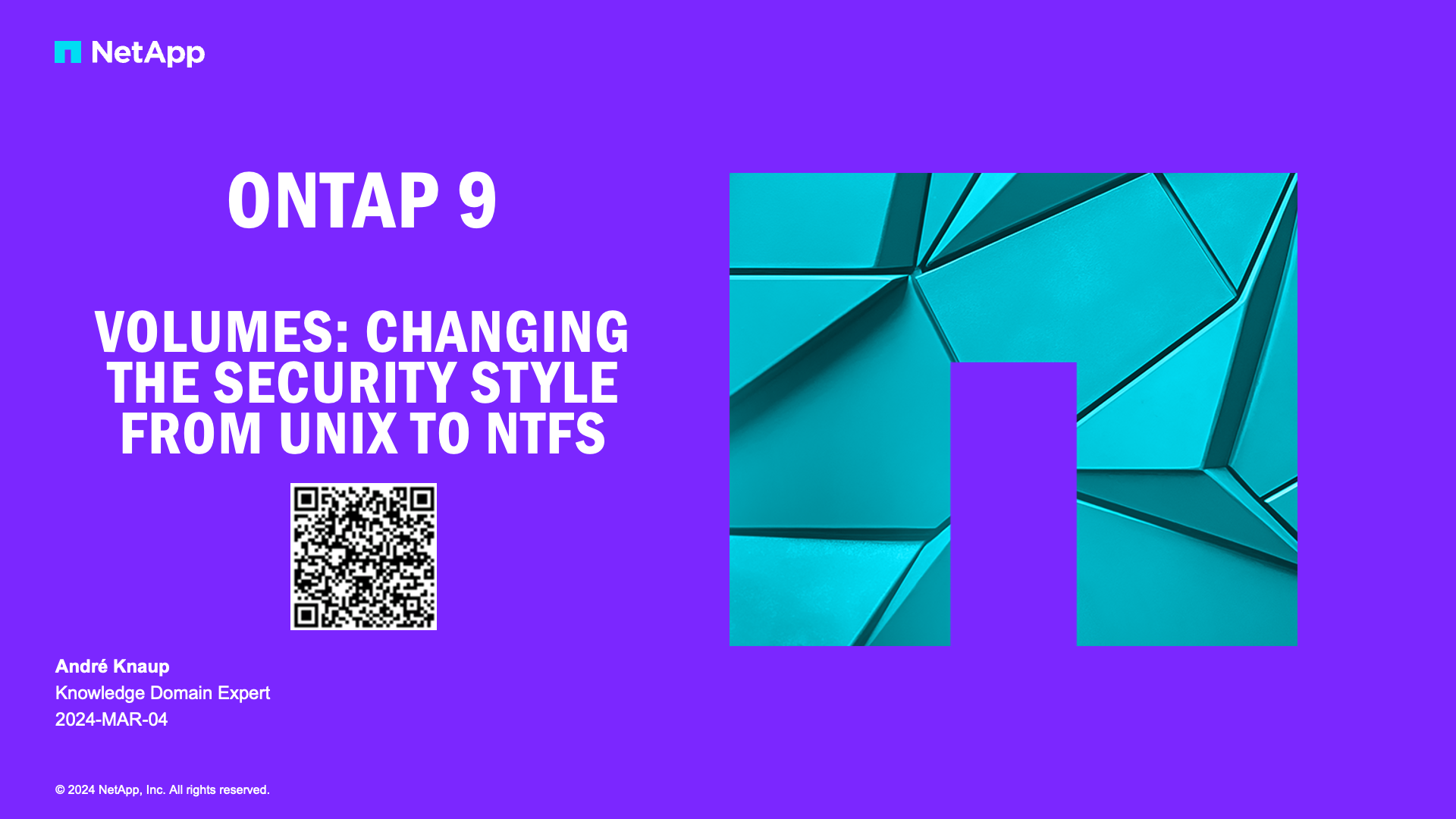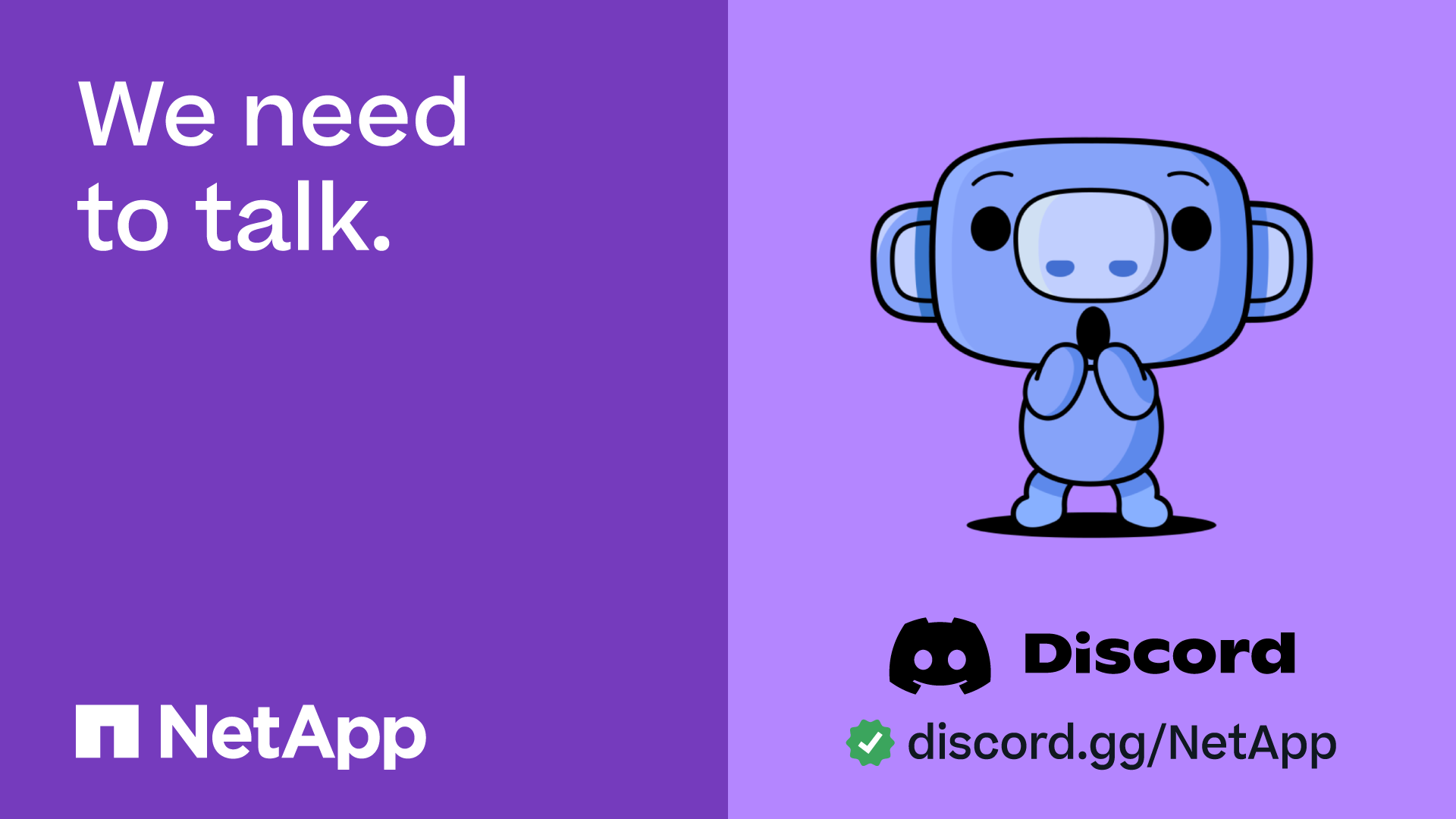ONTAP Discussions
- Home
- :
- ONTAP, AFF, and FAS
- :
- ONTAP Discussions
- :
- Active active / cluster / dual controller
ONTAP Discussions
- Subscribe to RSS Feed
- Mark Topic as New
- Mark Topic as Read
- Float this Topic for Current User
- Bookmark
- Subscribe
- Mute
- Printer Friendly Page
- Mark as New
- Bookmark
- Subscribe
- Mute
- Subscribe to RSS Feed
- Permalink
- Report Inappropriate Content
I am very new to netapp so please excuse my basic questions...
Active active and clusters are two independent storage arrays clustered together?
What is the term used for a single array with dual controllers?
I am trying to start basic here so for now I am trying to ignore clusters (two arrays) and just concentrate on a dual controller array (like the stuff I am used to! IBM/equallogic).
In a single array with dual controllers are these controllers active active and do the systems come like this by default?
As the systems I am used to are either active/active or active/passive dual controller I am sure you can see why I am getting confused in netapp world as active/active seems to be two arrays clustered together..???...
Solved! See The Solution
- Mark as New
- Bookmark
- Subscribe
- Mute
- Subscribe to RSS Feed
- Permalink
- Report Inappropriate Content
Our terminology has changed a few times over the years, so the confusion is understandable.
I will start with the Data ONTAP 7.2.x and 7.3.x families. Here we use the term active/active configuration for a single system with two storage controllers. Each controller normally serves its own data. If one controller fails, the partner controller takes over and serves both its own data and the data for the partner. Physically, the two controllers are connected to each other. Each controller also has one or more connections to its own disks and to its partner's disks.
In Data ONTAP 7.1 and earlier releases, this same configuration above was called a cluster.
Unlike some storage vendors, NetApp does not use passive controllers.
Starting with Data ONTAP 8.0 Cluster-Mode, we again use the term cluster. Here is the official definition:
In Data ONTAP 8.x Cluster-Mode, a group of connected nodes (storage systems) that share a global namespace and that you can manage as a single virtual server or multiple virtual servers, providing performance, reliability, and scalability benefits.
Note that we are no longer restricted to a pair of storage controllers. You can scale the Data ONTAP 8 cluster to include more controllers as needed. However all of the controllers are still active and available to serve data.
If you order a storage system with two controllers (there are applications where a single-controller configuration is adequate), the "default" would be that you have an active/active configuration or cluster. However, you need to be sure everything is configured correctly so that the system can fail over between controllers successfully.
- Mark as New
- Bookmark
- Subscribe
- Mute
- Subscribe to RSS Feed
- Permalink
- Report Inappropriate Content
Our terminology has changed a few times over the years, so the confusion is understandable.
I will start with the Data ONTAP 7.2.x and 7.3.x families. Here we use the term active/active configuration for a single system with two storage controllers. Each controller normally serves its own data. If one controller fails, the partner controller takes over and serves both its own data and the data for the partner. Physically, the two controllers are connected to each other. Each controller also has one or more connections to its own disks and to its partner's disks.
In Data ONTAP 7.1 and earlier releases, this same configuration above was called a cluster.
Unlike some storage vendors, NetApp does not use passive controllers.
Starting with Data ONTAP 8.0 Cluster-Mode, we again use the term cluster. Here is the official definition:
In Data ONTAP 8.x Cluster-Mode, a group of connected nodes (storage systems) that share a global namespace and that you can manage as a single virtual server or multiple virtual servers, providing performance, reliability, and scalability benefits.
Note that we are no longer restricted to a pair of storage controllers. You can scale the Data ONTAP 8 cluster to include more controllers as needed. However all of the controllers are still active and available to serve data.
If you order a storage system with two controllers (there are applications where a single-controller configuration is adequate), the "default" would be that you have an active/active configuration or cluster. However, you need to be sure everything is configured correctly so that the system can fail over between controllers successfully.
- Mark as New
- Bookmark
- Subscribe
- Mute
- Subscribe to RSS Feed
- Permalink
- Report Inappropriate Content
Thanks for your help.
So if I buy a FAS3140 (for example) with two controllers (active/active?) I will need to configure the system so that each controller can take over from the other in the event of a failure? How do I do this, is there some documentation you can point me at?
- Mark as New
- Bookmark
- Subscribe
- Mute
- Subscribe to RSS Feed
- Permalink
- Report Inappropriate Content
You are correct. To use your example of the FAS3140, you need a single chassis with two storage controllers.
As for documentation, that is available from our NetApp Support site (now.netapp.com). You do need an account to access this site. If you have trouble registering, your NetApp or NetApp partner representative should be able to help.
So assuming you can access the NetApp Support site, the basic cabling (such as connecting both controllers to both sets of disk shelves) is covered in the FAS31xx/V31xx System Installation and Setup flyer (http://now.netapp.com/NOW/knowledge/docs/hardware/filer/210-03554+D0.pdf).
The details of setting up an active/active configuration (Data ONTAP 7.3.x) or a cluster (Data ONTAP 8.x) are contained in the Data ONTAP documentation.
I would start with one of the following guides:
Data ONTAP® 7.3 Active/Active Configuration Guide (http://now.netapp.com/NOW/knowledge/docs/ontap/rel734/pdfs/ontap/aaconfig.pdf)
Data ONTAP® 8.0 7-Mode High-Availability Configuration Guide (http://now.netapp.com/NOW/knowledge/docs/ontap/rel80/pdfs/ontap/haconfig.pdf)
Regards,
-Greg
- Mark as New
- Bookmark
- Subscribe
- Mute
- Subscribe to RSS Feed
- Permalink
- Report Inappropriate Content
The term DataONTAP 8.0 Cluster-Mode is used with an actual cluster of two seprate storage systems and DataONTAP 8.0 7-Mode is used in a configuration with a single storage array with two controllers?
- Mark as New
- Bookmark
- Subscribe
- Mute
- Subscribe to RSS Feed
- Permalink
- Report Inappropriate Content
Cluster-mode and 7-mode are more than different configurations. They are two different flavors of the Data ONTAP software.
Rather than risk creating more confusion, I'll point you to the product datasheets:
Data ONTAP 8.0 7-Mode Operating System: http://media.netapp.com/documents/ds-2950.pdf
Data ONTAP 8.0 Cluster-Mode: http://media.netapp.com/documents/ds-2951.pdf
- Mark as New
- Bookmark
- Subscribe
- Mute
- Subscribe to RSS Feed
- Permalink
- Report Inappropriate Content
Thanks, I will check this out tomorrow
- Mark as New
- Bookmark
- Subscribe
- Mute
- Subscribe to RSS Feed
- Permalink
- Report Inappropriate Content
Hi Greg
I have read though the datasheets (thanks for this).
So basically you would use the cluster-mode software for high end environments in which you cluster many storage systems together for higher throughput etc?
You can 7 mode for environments not needing this level of protection/performance?
Also, most software modules can be used with both, for example I am particularly interested in vmware environments at the moment and as such will want to use snapmanager, snapmirror, dedup, flexvol, flexclone etc etc? Basically will I use 7-mode?
Also, when would you define which version you would use, at the time of purchase?
Sorry to keep asking these questions, I just need to be sure – I am trying to keeps things basic until I gain a better understanding.
- Mark as New
- Bookmark
- Subscribe
- Mute
- Subscribe to RSS Feed
- Permalink
- Report Inappropriate Content
I am in danger of getting outside my area of expertise. But if you plan to use SAN protocols (Fibre Channel, iSCSI, or FCoE), then 7-mode is the way to go today.
And since you expressed an interest in VMware solutions, you should take a look at our Technical Report "NetApp SAN Solutions for VMware" (http://media.netapp.com/documents/tr-3704.pdf).
You should also check out NetApp Virtual Storage Console. This is a plug-in to the vCenter Server that helps you configure and monitor NetApp storage used by ESX hosts. (http://www.netapp.com/us/products/management-software/vsc/virtual-storage-console.html)
- Mark as New
- Bookmark
- Subscribe
- Mute
- Subscribe to RSS Feed
- Permalink
- Report Inappropriate Content
thanks for the help
- Mark as New
- Bookmark
- Subscribe
- Mute
- Subscribe to RSS Feed
- Permalink
- Report Inappropriate Content
Hi Greg
I have read the cabling config guides for a system with dual controllers connecting to all shelf’s - Is this all that is needed to ensure that both controllers can take over from the other in the event of failure?
Thanks
- Mark as New
- Bookmark
- Subscribe
- Mute
- Subscribe to RSS Feed
- Permalink
- Report Inappropriate Content
Make sure that your host side connectivity won't break in a case of a controller failover. E.g. from IP perspective both controllers should be on the same subnet.
You should also specify on each IP interface (or vif) what IP address (or vif name) it should takeover from its cluster partner during failover
Regards,
Radek
- Mark as New
- Bookmark
- Subscribe
- Mute
- Subscribe to RSS Feed
- Permalink
- Report Inappropriate Content
I would like to add that the term "active/active" means different things to different people & vendors. Coming from the fibre channel world, I would not classify a NetApp filer running OnTap 7.x as truly "active/active". A NetApp LUN resides inside a volume that is owned by a single controller. The filer supports ALUA (asymmetrix logical unit access), which basically tells the FC-connected host which NetApp controller's FC port(s) to access the LUN on. There is an "optimized" path, and a "non-optimized" path. If a host tries to access a NetApp FC LUN via the other NetApp controller, the filer will send out an autosupport and complain about the potential problem. With ALUA, there are no significant consequences of accessing a LUN through the wrong controller, though performance may be slightly degraded. If an "active/active" NetApp filer loses a controller, the volumes that reside on that controller remain accessible via the other controller. Though the controllers are connected internally, they controllers are still seen in many ways as separate controllers (they even each have their own separate host names and OS volumes).
There's nothing wrong with NetApp's approach to their "active/active" filers, though it is different than what other vendors do, so it's important to be aware of the differences.
- Mark as New
- Bookmark
- Subscribe
- Mute
- Subscribe to RSS Feed
- Permalink
- Report Inappropriate Content
Thanks for this also - It is very helpful
- Mark as New
- Bookmark
- Subscribe
- Mute
- Subscribe to RSS Feed
- Permalink
- Report Inappropriate Content
Please suggest what is best praactice to netapp controller user as active/active or active/passive we brought 8.2 p 7mode os 3220 netapp


